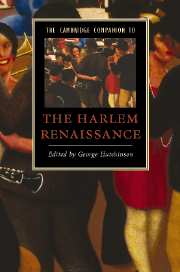1 - The New Negro as citizen
from Part I: - Foundations of The Harlem Renaissance
Published online by Cambridge University Press: 28 July 2007
Summary
In an America that prided itself on its exceptionalism, it was the Negro who was the most important exception to American citizenship. Unlike other Americans, with the exception of the Native Americans, African Americans had to wait until the passage of the Fourteenth Amendment in 1867, two hundred years after first arriving in North America, to become citizens, and wait another hundred years before they could exercise the rights of citizens everywhere in the nation. Because America has prided itself on its self-proclaimed pluralism, its justly lauded achievement of blending together so many diverse peoples into a common culture, some questions remained. What about the Negro? How could the Negro enter into an American notion of citizenship that was predicated on immigrants becoming “white” by defining themselves as “not black?” How could black people become citizens if black exclusion was the very ground of citizenship for others? Frederick Douglass perhaps put it best. Douglass asserted that Lincoln was a great man and the father of the new white nation that came into being with the Civil War. But the Negro was only Lincoln's stepchild, a fatherless child who had to find his or her own way into a citizenship alone. What was simply a passing anomaly to the rest of Americans marching to the drumbeat of celebratory democracy became, for the black citizen, what Henry James called a complex fate – for to forge a Negro into an American citizen would require that both America and the Negro be changed.
- Type
- Chapter
- Information
- The Cambridge Companion to the Harlem Renaissance , pp. 13 - 27Publisher: Cambridge University PressPrint publication year: 2007

